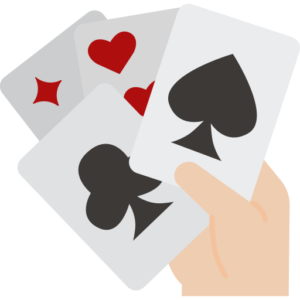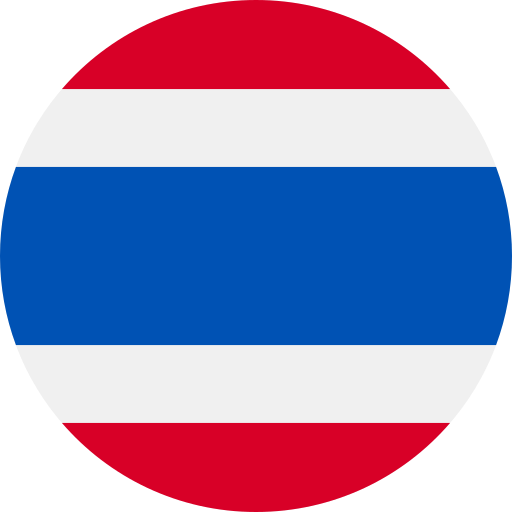Glossary Term
Buy In
Buy In
Used In: Poker
Introduction
In poker, the term “buy-in” refers to the initial amount of money a player must pay to enter a game or tournament. This payment gives the player a starting stack of chips, which they can use to participate in the game. The buy-in amount varies depending on the specific game or tournament structure, with some games requiring a low buy-in and others involving higher stakes. Understanding the buy-in is key to managing your bankroll and deciding where to play.
The buy-in serves as the cost of entry to a poker game and directly influences the level of competition. A low buy-in typically attracts more casual players, while higher buy-ins are often found in games with more experienced and serious players. In tournaments, the buy-in may also include a fee that goes toward the prize pool, with the goal of rewarding top-performing players at the end of the event.
Choosing the right buy-in level is an important decision for any player. It determines the amount of risk a player is willing to take and sets the tone for the kind of game they will play. Players should consider their skill level, experience, and bankroll before committing to a buy-in, as it directly impacts their overall strategy and ability to stay in the game.
In Depth Look
A buy-in in poker is more than just a simple entry fee; it plays a significant role in shaping the structure of the game. The buy-in amount determines the starting chip stack a player will have, which is essential for their strategy throughout the game. In cash games, the buy-in can usually be varied within set limits, giving players the flexibility to choose how much they want to risk. In contrast, tournament buy-ins are fixed amounts, often including a registration fee that helps create the prize pool. As the game progresses, players with larger chip stacks have a significant advantage in terms of betting power, but they must balance that with careful management of their chips to avoid going “bust.”
Understanding the buy-in also helps players assess the overall risk of a game. A higher buy-in typically indicates higher stakes, and with that comes the potential for bigger rewards but also greater losses. Players need to assess their bankroll carefully, ensuring they don’t enter a game with a buy-in that is too high for their financial comfort. The right buy-in level also helps a player find a table that matches their skill level, as higher buy-ins tend to attract more experienced players. Choosing the right buy-in is therefore not just about the money but about setting yourself up for a more enjoyable and strategic experience.
The buy-in amount can influence both the skill level of players at the table and the size of the potential rewards.
Mechanics
At the beginning of a game or tournament, each player must pay the required buy-in amount, which is exchanged for chips. In a cash game, the chips represent real money, and players can buy in multiple times if they lose all their chips. In a tournament, the buy-in is a one-time fee, and players receive tournament chips that do not hold real money value but are used to track their progress in the event. As the game continues, players can either add more chips through rebuys (if allowed) or lose their chips and be eliminated from the game or tournament.
The buy-in amount influences the game's structure and overall experience. In cash games, the chips are tied directly to real money, so the game maintains a constant level of play. In tournaments, the buy-in is used to create a prize pool, which is then distributed to the top finishers. The mechanics of the buy-in ensure that everyone at the table starts on an equal footing, with the same number of chips, allowing for fair play. Depending on the event, the buy-in can also include additional fees for organizing the tournament, which are typically separated from the prize pool. This system ensures that the game is not only about luck and skill but also about managing your chips effectively to stay in the game.


Illustrated Example
In cash games, the buy-in determines the number of chips a player starts with, and these chips represent real money. For example, a player who buys in for $100 will receive a corresponding amount of chips, usually in denominations like $1, $5, and $25. As the game progresses, they can make bets, raise, or fold based on the chips they have. If a player runs out of chips in a cash game, they can buy in again, allowing them to continue playing. This system means that cash games allow for flexibility in how much a player is willing to risk and can keep players involved for longer periods.
In contrast, tournament buy-ins work a bit differently. Players pay an entry fee to receive a fixed amount of tournament chips, which have no monetary value outside of the tournament itself. The goal in a tournament is to accumulate chips and survive until the end, where the top players win a portion of the prize pool. If a player loses all their chips, they are eliminated from the tournament. Tournament buy-ins often include a portion that goes to the house or organizers as a fee. Rebuys may be available in certain tournaments, allowing players to buy more chips after being eliminated. Here's a brief table to illustrate a typical cash game buy-in and tournament buy-in scenario:
| Game Type | Buy-In Amount | Starting Chips | Rebuy Option | Prize Pool |
|---|---|---|---|---|
| Cash Game | $100 | $100 worth of chips | Yes (depending on rules) | None (cash games are not tournament-based) |
| Tournament | $50 | 5,000 tournament chips | Yes (if allowed by rules) | Prize pool awarded to top players |
This table gives a quick overview of how buy-ins differ between cash games and tournaments. While cash games have a straightforward relationship between buy-ins and chip value, tournament buy-ins are about entry fees for a shot at a larger prize pool, with tournament chips representing progress rather than direct cash.
Player Perspective
A higher buy-in can provide more chips, allowing for more flexibility in betting and a better chance to recover from losses. However, this also means a larger financial risk, especially if the player is not experienced or confident in their skills. On the other hand, a lower buy-in may limit the amount of chips available but could allow the player to test their skills without risking too much money. Understanding how much to buy in for is essential to balancing risk and reward, and players need to know when to walk away if things are not going in their favor.
In tournaments, the buy-in is often seen as a one-time investment in the chance to win a larger prize pool. Players need to consider the structure of the tournament, the field of competitors, and how many levels the tournament will have. The goal is to survive and accumulate chips, all while managing the pressure of potentially being eliminated if they run out of chips. Tournament players often adjust their strategies based on the size of their stack, making careful decisions in the early levels and being more aggressive when the blinds increase. A key aspect of tournament play is knowing how to use the initial buy-in to your advantage, pacing yourself through the event, and reacting to changes in the game dynamics. For most players, the buy-in represents not just an entry fee but a chance to test their skills against others in pursuit of a significant payout.
Conclusion
In conclusion, the buy-in is a fundamental aspect of poker that shapes the experience for every player, whether in a cash game or a tournament. It determines the level of risk involved, the number of chips a player starts with, and the overall structure of the game. Players must carefully consider their skill level, bankroll, and goals before committing to a buy-in, as it impacts both strategy and the potential for success. Whether aiming for consistent profit in a cash game or a tournament win, understanding how the buy-in influences the game is key to making informed decisions and managing risk effectively.
The Top Online Casinos for Playing Poker
These platforms prioritize player satisfaction by providing intuitive interfaces, seamless gameplay experiences, and robust security measures to ensure a fair and enjoyable environment for all users.
welcome bonus
Welcome package €1,500 + 350 Free Spins
35x wagering (Deposit & Bonus)
Top 5 best casinos
$titl$ is not the Best Choice. Here are some better options:


Author
Branimir Ivanov | Senior News Contributor









